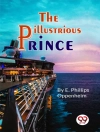‘War and Peace’ is a monumental exploration of the interplay between individual lives and historical forces during the Napoleonic Wars. Tolstoy intricately weaves together the lives of several aristocratic families, notably the Rostovs and the Bolkonskys, against the backdrop of grand battles and societal upheavals. His literary style employs a realist approach, blending philosophical discourse with vivid character portraits and deep psychological insight, epitomizing 19th-century Russian literature. Thematically, the work grapples with fate, free will, and the nature of history, encouraging readers to question the determinism of war and peace alike. Leo Tolstoy, a pivotal figure in Russian literature, was influenced by his own experiences in the military and the stark realities of his aristocratic upbringing. His moral philosophy, developed in the latter part of his life, is reflected in ‘War and Peace’ as he sought a deeper understanding of life’s complexities and the human condition. Tolstoy’s unique perspective on ethics and spirituality, cultivated over decades of introspection and social engagement, profoundly informs this epic narrative. This timeless novel is not only a profound historical account but also a universal meditation on love, family, and the resilience of the human spirit. Readers are invited to delve into an intricate tapestry of characters and events that continue to resonate today, offering both a captivating story and an invitation to reflect on the essence of humanity through the lens of war and peace.
About the author
Count Lev Nikolayevich Tolstoy, commonly known as Leo Tolstoy, was born on September 9, 1828, into a Russian aristocratic family. He is acclaimed as one of the giants of Russian literature and is best known for his voluminous masterpiece ‘War & Peace’ (1869), which offers a complex and vivid depiction of Russian society during the Napoleonic era. Through a seamless mix of historical chronicle and personal portraits, he wove a grand narrative that explores themes of war, peace, love, and human existence. His literary style combined a moral quest for truth and non-violence with an unyielding criticism of organized religion and state. His ideas on civil disobedience and passive resistance had a profound influence on figures like Gandhi and Martin Luther King, Jr. Besides ‘War & Peace’, his magnum opus, ‘Anna Karenina’ (1877) also stands as a pinnacle in realist fiction, portraying the tragic consequences of a woman’s passion against the backdrop of a rigid society. Tolstoy’s later works became increasingly didactic and radical, reflecting his personal philosophic quest, as seen in ‘The Kingdom of God Is Within You’ (1894). Tolstoy died on November 20, 1910, but remains alive in the pantheon of literary geniuses, his works continuing to earn the fascination and admiration of readers worldwide.












